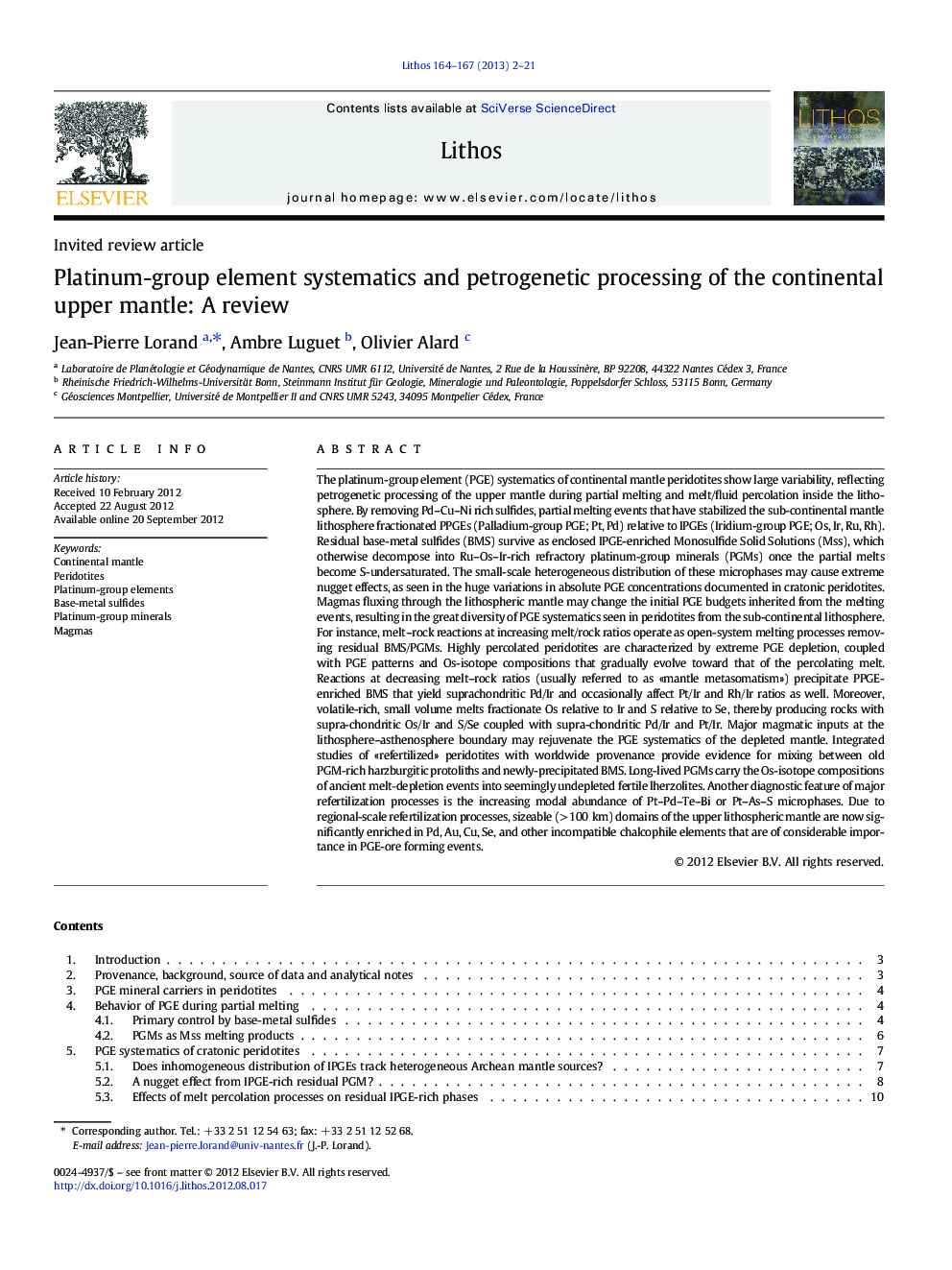| کد مقاله | کد نشریه | سال انتشار | مقاله انگلیسی | نسخه تمام متن |
|---|---|---|---|---|
| 4716267 | 1638694 | 2013 | 20 صفحه PDF | دانلود رایگان |
The platinum-group element (PGE) systematics of continental mantle peridotites show large variability, reflecting petrogenetic processing of the upper mantle during partial melting and melt/fluid percolation inside the lithosphere. By removing Pd–Cu–Ni rich sulfides, partial melting events that have stabilized the sub-continental mantle lithosphere fractionated PPGEs (Palladium-group PGE; Pt, Pd) relative to IPGEs (Iridium-group PGE; Os, Ir, Ru, Rh). Residual base-metal sulfides (BMS) survive as enclosed IPGE-enriched Monosulfide Solid Solutions (Mss), which otherwise decompose into Ru–Os–Ir-rich refractory platinum-group minerals (PGMs) once the partial melts become S-undersaturated. The small-scale heterogeneous distribution of these microphases may cause extreme nugget effects, as seen in the huge variations in absolute PGE concentrations documented in cratonic peridotites. Magmas fluxing through the lithospheric mantle may change the initial PGE budgets inherited from the melting events, resulting in the great diversity of PGE systematics seen in peridotites from the sub-continental lithosphere. For instance, melt–rock reactions at increasing melt/rock ratios operate as open-system melting processes removing residual BMS/PGMs. Highly percolated peridotites are characterized by extreme PGE depletion, coupled with PGE patterns and Os-isotope compositions that gradually evolve toward that of the percolating melt. Reactions at decreasing melt–rock ratios (usually referred to as «mantle metasomatism») precipitate PPGE-enriched BMS that yield suprachondritic Pd/Ir and occasionally affect Pt/Ir and Rh/Ir ratios as well. Moreover, volatile-rich, small volume melts fractionate Os relative to Ir and S relative to Se, thereby producing rocks with supra-chondritic Os/Ir and S/Se coupled with supra-chondritic Pd/Ir and Pt/Ir. Major magmatic inputs at the lithosphere–asthenosphere boundary may rejuvenate the PGE systematics of the depleted mantle. Integrated studies of «refertilized» peridotites with worldwide provenance provide evidence for mixing between old PGM-rich harzburgitic protoliths and newly-precipitated BMS. Long-lived PGMs carry the Os-isotope compositions of ancient melt‐depletion events into seemingly undepleted fertile lherzolites. Another diagnostic feature of major refertilization processes is the increasing modal abundance of Pt–Pd–Te–Bi or Pt–As–S microphases. Due to regional-scale refertilization processes, sizeable (> 100 km) domains of the upper lithospheric mantle are now significantly enriched in Pd, Au, Cu, Se, and other incompatible chalcophile elements that are of considerable importance in PGE-ore forming events.
► Petrogenetic processing may generate a wide range of PGE systematics inside the continental lithosphere.
► PGE budgets inherited from melting events are highly sensitive to magma fluxes
► Major magmatic inputs may rejuvenate the PGE systematic of depleted mantle.
► Sizeable domains of the continental lithosphere are significantly enriched in Pd, Au, Cu, and Se.
Journal: Lithos - Volumes 164–167, April 2013, Pages 2–21
